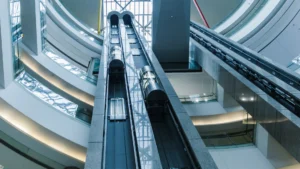Daftar isi
BeralihNon-Standard Elevator Design and Manufacture
Firstly, one must consider the safety features of the non-standard elevator design. Safety is paramount in any vertical transportation system, and non-standard elevators are no exception. It is crucial to ensure that the design and manufacture meet international safety standards and regulations. For example, the installation of various safety devices such as emergency stop buttons, interlocks, and alarms, can help prevent accidents and provide peace of mind for users.
In addition to safety, customization is another aspect that customers prioritize when choosing non-standard elevator designs. These elevators are tailored to fit specific spaces or meet unique requirements, making them ideal for various applications. For instance, in a shopping mall, a non-standard elevator design can be created to match the aesthetics of the surroundings, seamlessly blending in with the overall interior design. Moreover, in industrial settings, non-standard elevators can be specifically designed to transport heavy machinery or equipment, optimizing workflow and efficiency.
Reliability is yet another factor that should not be overlooked. Non-standard elevators are often used in settings where a constant and uninterrupted flow of operation is necessary. Whether it is in a hospital, where patients’ lives depend on smooth vertical transportation, or in a high-rise residential building, where residents rely on the elevator for everyday convenience, reliability is of utmost importance. Therefore, selecting a manufacturer with a proven track record of quality and reliability is essential for ensuring the continued satisfaction of users.
Energy efficiency is becoming an increasingly important consideration in today’s environmentally conscious world. Non-standard elevator designs can be optimized to minimize energy consumption, thereby reducing the carbon footprint. For example, incorporating energy-saving features such as LED lighting, regenerative drives, and standby mode can significantly decrease energy consumption without compromising performance. This not only benefits the environment but also helps in reducing operational costs for the building owner or manager.
Moreover, non-standard elevator designs and manufacturers must also consider accessibility for people with disabilities. Ensuring that the design meets accessibility requirements, such as wider doorways, Braille buttons, and audio announcements, allows for inclusive vertical transportation. By prioritizing accessibility, non-standard elevators can cater to a diverse range of users and create equal opportunities for everyone.
In conclusion, when choosing non-standard elevator designs and manufacturers, it is crucial to prioritize safety, customization, reliability, energy efficiency, and accessibility. Whether it is for a commercial, industrial, or residential setting, these factors must be carefully considered to ensure a seamless and efficient vertical transportation system. By selecting the right non-standard elevator design and manufacturer, customers can benefit from the advantages and applications that meet their specific needs. So, make an informed decision and enjoy the benefits of a non-standard elevator design that perfectly suits your requirements.


